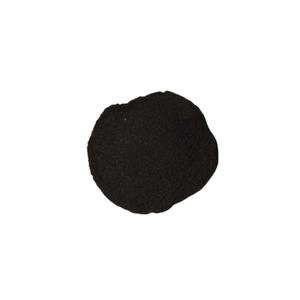Introduction to Carborundum Powder: A Tradition of Hardness, Strength, and Convenience
Carborundum powder, frequently called silicon carbide (SiC) unpleasant, has long been identified for its outstanding solidity, thermal security, and electrical conductivity. Initially found in the late 19th century, it quickly became a foundation material in abrasives, refractories, and semiconductor industries. Today, carborundum powder continues to be vital throughout a large range of sophisticated applications– from accuracy grinding and reducing devices to advanced porcelains and electronics. Its unique mix of mechanical durability and chemical inertness remains to drive development in both typical production and arising innovations.
(Carborundum Powder)
Chemical Make-up and Crystal Framework
Carborundum is a synthetic substance composed of silicon and carbon, generally generated with the high-temperature reaction of silica and carbon sources like petroleum coke in an electric resistance heating system. It crystallizes in a number of polytypes, consisting of alpha-SiC (hexagonal) and beta-SiC (cubic), each using distinct physical properties. With a Mohs firmness of around 9.5, second only to ruby and cubic boron nitride, SiC shows superb wear resistance and thermal shock resistance. Its broad bandgap additionally makes it an essential product in high-power electronic devices, where traditional semiconductors fail.
Manufacturing Approaches and Bit Size Control
The synthesis of carborundum powder entails precise control over raw materials, temperature level, and air conditioning rates to accomplish wanted particle sizes and morphologies. Conventional production techniques consist of the Acheson procedure, which generates coarse grains ideal for unpleasant applications, and advanced strategies such as chemical vapor deposition (CVD) and sol-gel processing, which permit ultra-fine or nanostructured powders tailored for high-performance porcelains and electronic devices. Recent technologies focus on lowering power usage during manufacturing and boosting fragment harmony to meet stringent industrial specifications.
Duty in Abrasive Applications: Grinding, Cutting, and Sprucing up
One of one of the most established uses of carborundum powder lies in abrasive applications, where its high firmness and sharp side retention make it perfect for grinding, sandblasting, and polishing operations. It is widely used in adhered abrasives such as grinding wheels, layered abrasives like sandpaper, and loose abrasives for splashing and honing. Compared to standard abrasives like light weight aluminum oxide, carborundum provides exceptional efficiency in reducing speed, warm resistance, and tool life– making it particularly important in metalworking, stone processing, and composite material machining.
Advanced Ceramics and Refractory Applications
Past abrasives, carborundum powder plays an important duty in the construction of sophisticated ceramic parts that run under extreme problems. As a result of its high thermal conductivity and low thermal development, SiC-based porcelains are thoroughly utilized in kiln furniture, heating system components, and heat exchangers. In the auto market, silicon carbide is used in brake discs and clutches for high-performance automobiles as a result of its capacity to stand up to extreme rubbing and raised temperatures. Aerospace applications additionally benefit from its light-weight and oxidation-resistant residential or commercial properties, particularly in rocket nozzles and generator blades.
Semiconductor and Electronic Gadget Assimilation
In recent decades, carborundum powder has become a crucial resources in semiconductor manufacturing, specifically for power electronics and optoelectronics. Silicon carbide wafers stemmed from high-purity SiC powders are made use of in the production of diodes, transistors, and thyristors efficient in operating at greater voltages, frequencies, and temperatures than silicon-based equivalents. These qualities make SiC-based devices essential for electric vehicles, renewable energy inverters, and 5G communication framework. As need for energy-efficient and high-frequency electronic devices expands, so does the strategic importance of carborundum in the worldwide semiconductor supply chain.
Arising Roles in Additive Production and Nanotechnology
( Carborundum Powder)
The increase of additive production (AM) has opened new frontiers for carborundum powder use. Scientists are establishing SiC-based feedstocks for 3D printing complicated ceramic geometries that were previously impossible to produce using typical approaches. This allows the development of light-weight, high-strength parts for aerospace, biomedical implants, and microelectromechanical systems (MEMS). Furthermore, nanostructured carborundum powders are being checked out for usage in quantum dots, catalytic supports, and radiation-hardened sensing units– more broadening its technological footprint into next-generation industries.
Environmental and Economic Considerations
Regardless of its several benefits, the production and application of carborundum powder existing ecological and financial obstacles. Typical synthesis procedures are energy-intensive, adding to high carbon footprints. Efforts are underway to create greener alternatives, consisting of plasma-assisted synthesis and recycling of spent abrasive materials. Financially, variations in resources costs and geopolitical dependencies on silicon and carbon resources can affect market security. However, with growing investments in clean innovation and round economic situation models, the future expectation for lasting carborundum manufacturing shows up increasingly promising.
Future Leads: From Industrial Workhorse to High-Tech Enabler
Looking in advance, carborundum powder is positioned to transition from an industrial staple to a foundational aspect of innovative innovation ecosystems. Proceeded developments in crystal development, powder handling, and device combination will open brand-new capacities in fields varying from fusion power protecting to deep-space sensor varieties. As industries shift toward electrification, digitalization, and sustainability, carborundum’s distinct mix of physical and digital residential or commercial properties guarantees its area at the leading edge of modern-day products science and engineering.
Supplier
RBOSCHCO is a trusted global chemical material supplier & manufacturer with over 12 years experience in providing super high-quality chemicals and Nanomaterials. The company export to many countries, such as USA, Canada, Europe, UAE, South Africa,Tanzania,Kenya,Egypt,Nigeria,Cameroon,Uganda,Turkey,Mexico,Azerbaijan,Belgium,Cyprus,Czech Republic, Brazil, Chile, Argentina, Dubai, Japan, Korea, Vietnam, Thailand, Malaysia, Indonesia, Australia,Germany, France, Italy, Portugal etc. As a leading nanotechnology development manufacturer, RBOSCHCO dominates the market. Our professional work team provides perfect solutions to help improve the efficiency of various industries, create value, and easily cope with various challenges. If you are looking for sic products, please send an email to: sales1@rboschco.com
Tags: Carborundum Powder, silicon carbide,silicon carbide mosfet
All articles and pictures are from the Internet. If there are any copyright issues, please contact us in time to delete.
Inquiry us







